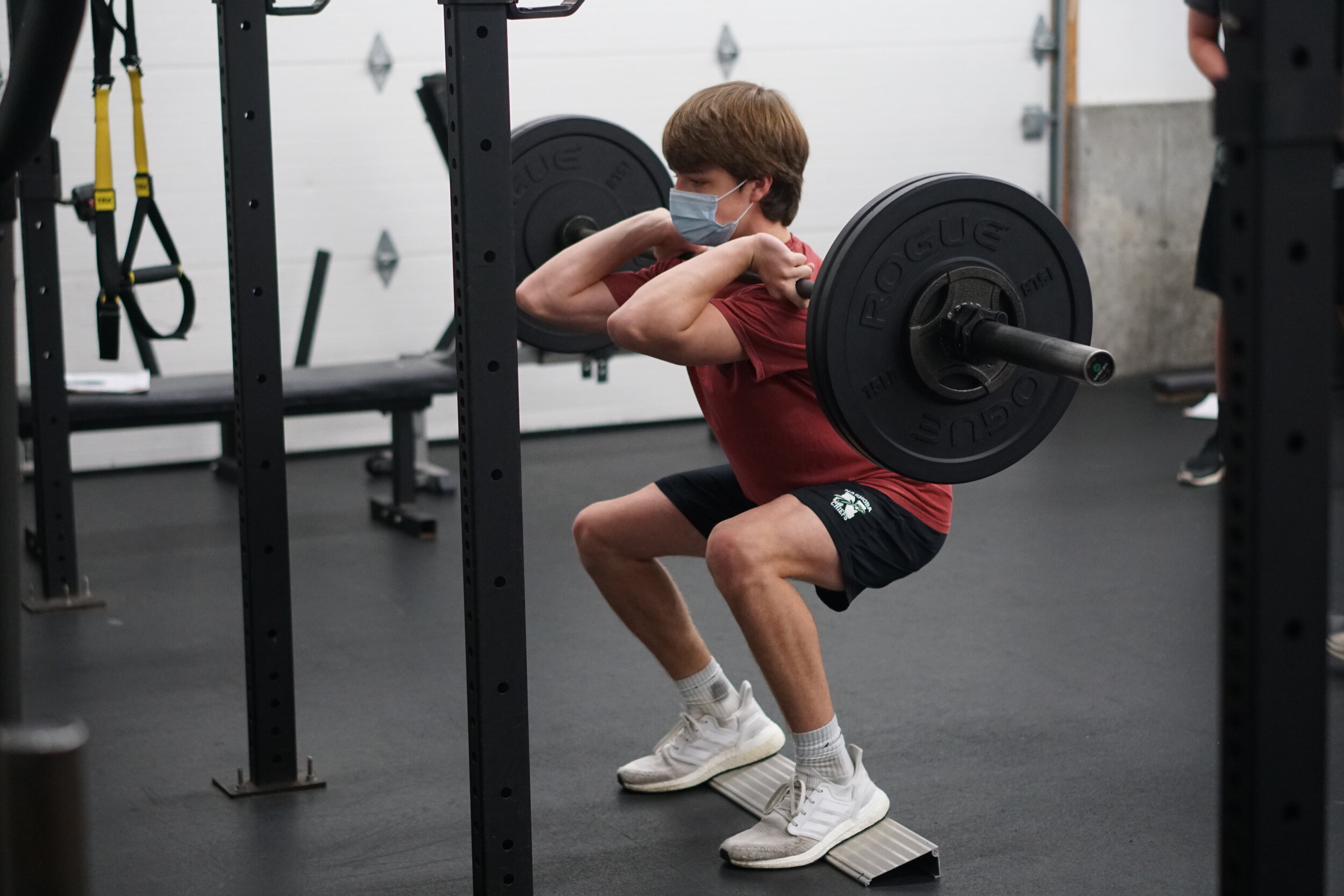The Importance and Execution of In-Season Training
Perhaps the biggest mistake an athlete can make in their development and performance is to stop strength training outright when their season begins. While no physical quality in the gym trumps sports-specific skill, practice alone is not sufficient for maintaining whatever strength and power you developed in the off-season.
HOW LONG DOES IT TAKE FOR YOU TO BEGIN TO LOSE THESE TRAINING QUALITIES?
Age, experience, the demands of your sport, and nutrition all factor into the equation. Maximal power will begin to decline after a week without training. Strength and muscle size decrease after 4 to 5. The work you did to become a stronger, faster, and more robust athlete in the off-season has potentially diminished within the first month of your season. Over the course of a 10-12 week season, those losses are amplified.
An athlete’s primary concern with in-season lifting is that it will compound additional fatigue on top of that acquired from practices and games. An intelligent approach to programming can prevent this and in fact have the opposite effect.
ASSESSING AN ATHLETE’S LEVEL OF FATIGUE AND READINESS
In addition to an athlete’s self-reported perception of fatigue, there are metrics we can track in the gym that provide additional information on Central Nervous System (CNS) and muscular fatigue.
Studies demonstrate a relationship between grip strength and fatigue. Readings from a handheld dynamometer can provide a fairly reliable and time-efficient value for this. Vertical Jump performance also appears to be a reliable indicator of Neuromuscular fatigue. Similarly it requires little time and is an effective way of assessing whether an athlete is fresh. After a proper warm-up, athletes can take 3 to 4 jumps on the Just Jump Mat to get a reading.
We will use the athlete’s feedback, these quantitative measures, and their competition schedule to determine whether they have the green light for a full training session. If the numbers are lower than average or an athlete claims to feel more tired than usual, we can pivot and focus more on restorative work and low volume strength training.
IN-SEASON TRAINING PROTOCOLS
There are a few guidelines that we follow when putting together an in-season training program. These should be used to influence your selection of movements, sets, reps, and load.
1.) Frequency of Competition – Depending on whether your sport requires you to compete frequently or peak for a specific event should dictate how you program in-season training. If your season begins but the main event is still months away, you should continue to train hard and maximize every opportunity to get stronger; provided that it doesn’t negatively impact your skill practice. However, if you play multiple games per week then you may need to reserve more time in the gym for recovery work. Understanding this, the following considerations should be made:
2.) No Novel Stimuli – Novel stimuli (something your body isn’t accustomed to) will increase the amount of soreness you experience for up to 72 hours after the session and could negatively impact your performance in subsequent practices and games. I’m less concerned with the specific variation and more interested in whether an athlete has previously mastered the movement pattern in prior training blocks. Your off-season programming should have revolved around exercises that improved physical qualities directly related to your sport. Continue to progress through exercises that you are familiar with. Soreness and unnecessary fatigue will be minimized and the time needed to learn new movements will be saved.
3.) Complement, Don’t Copy - Every sport has different demands from a stress and energy systems standpoint. Our goal with in-season training is to complement these, not mimic them. We wouldn’t want to give our baseball athletes exercises that have a heavy grip involvement; or our basketball athletes high volumes of jumping. We need to anticipate common aches and pains so our programming can address them before they manifest and hinder performance.
4.) Minimize Eccentric Load – The eccentric portion of a movement is when the muscle is being lengthened. During certain phases of training we emphasize this to increase time under tension and accumulate more muscle damage and subsequent growth. However, in-season, the approach to this is the opposite; we want to shorten or completely omit the eccentric portion of an exercise to reduce soreness. In following this guideline you should also be adhering to #2; in-season lifting is not the time to experiment with new exercises.
5.) Specific Mobility Work – Certain sports are very repetitive in their movement patterns (i.e. jumping in basketball, throwing in baseball, etc). This means that certain tissues are being stressed more than others. Understanding what mobility and soft tissue work would combat this wear and tear is important to reducing the risk of overuse injury. 10-15 minute mobility circuits are a great way to get in low-impact low-intensity conditioning while promoting blood flow and improving recovery. Athletes who approach mobility work with the same intent as strength training are rewarded with substantially better movement and training results.
6.) Velocity-Based Training (VBT) – VBT is a method of training that focuses on the speed of a lift more so than a specific load. We can use a PUSH band to measure the velocity of the barbell. Lifts may be prescribed at a certain velocity (m/s) as opposed to load. If an athlete is fatigued, the load associated with 0.8 m/s may be 165lbs; if he or she is fresh, the weight may be closer to 185lbs. This will allow us to account for an athlete’s readiness on that day as well as target a specific training effect.
SUMMARY
If a sports season lasts 12 weeks and you would usually train twice a week, you’d be missing out on 24 training sessions by removing strength training from your routine. Over the course of a high school career this is nearly 100 sessions; that is, if you’re a one-sport athlete. Multiply that number by 2 or 3 if you play multiple sports and you’re missing out on a few hundred hours of development. Athletes who remain consistent with strength training throughout the year aren’t stuck in the cycle of progress in the off-season, regress in-season, and re-start in the next off-season.
The importance of remaining consistent with strength training should be clear. Your concern should be less about whether strength training will negatively impact your immediate performance and more about how you can intelligently train during the season and set yourself up to be successful throughout the course of a 3 month season; especially towards the end of the season when performance is typically most important. Hopefully this will give you some strategies to do so.





